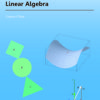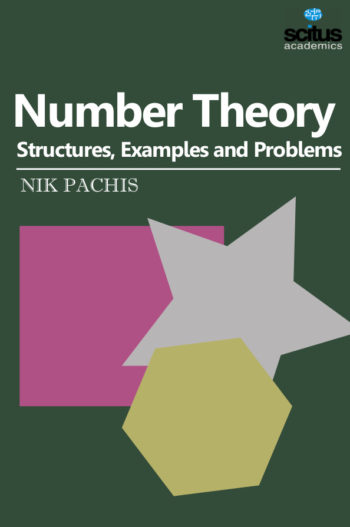Algebra became more general and more abstract in the 1800s as more algebraic structures were invented. Algebra is used by virtually all mathematicians, be they analysts, combinatorics, computer scientists, geometers, logicians, number theorists, or topologists. Nowadays, everyone agrees that some knowledge of linear algebra, groups, and commutative rings is necessary, and these topics are introduced in undergraduate courses.
This book takes an altogether new approach to advanced algebra covering the theoretical and practical aspects of groups, rings, and fields. However, with the development of computing in the last several decades, applications that involve abstract algebra and discrete mathematics have become increasingly important, and many sciences, engineering, and computer science students are now electing to minor in mathematics. The first chapter investigates the structure of groups in which every (infinite) subgroup is either almost normal or nearly normal. We generalize the notion of commutativity in several algebras by using the functions, i.e., commutative, left-pre-commutative, right-pre-commutative and pre-commutative conditions, and we develop the notions with aid of Smaragdite discontinues and describe some relations between BCK-algebras and a pre-commutative axiom. In recent years, fuzzy multisets and neuromorphic sets have become a subject of great interest for researchers and have been widely applied to algebraic structures include groups, rings, fields, and lattices. A neuromorphic multiset is a generalization of multisets and neuromorphic sets. In the next chapter, this book proposed an algebraic structure on neuromorphic multisets is called neuromorphic multigroup which allows the truth-membership, indeterminacy-membership, and falsity-membership sequence to have a set of real values between zero and one. Most of the real-world problems in social sciences, the environment, engineering, medical sciences, economics, etc., involve data that contain uncertainties. To overcome these uncertainties, researchers are motivated to introduce some classical theories like the theories of fuzzy sets, rough sets, intuitionistic fuzzy sets, vague sets, and interval mathematics, i.e., by which we can have a mathematical tool to deal with uncertainties. Therefore, this book also focuses on establishing a bridge to connect a soft set and the union operations on sets, then applying it to BCK/BCI-algebras.
In subsequent chapters, the book presents emphasis on high order tensor forms of growth curve models; involutions in the automorphism groups of small sporadic simple groups; the decomposition theorems of AG-Neuromorphic extended triplet loops and strong AG-(l, l)-Loops; and a study on the development of neuromorphic triplet ring and neuromorphic triplet field.
Additionally, the book focuses on some special elements and pseudo-inverse functions in groupoids. In the last chapter, the book gives necessary and sufficient conditions for the existence of the Banach Λ-frames. A Paley-Wiener type stability theorem for Λ-Banach frames is discussed.
This book will serve as a valuable tool for advanced graduate students, analysts, combinatorics, computer scientists, geometers, logicians, number theorists, or topologists as well as practitioners will find this valuable.














Reviews
There are no reviews yet.